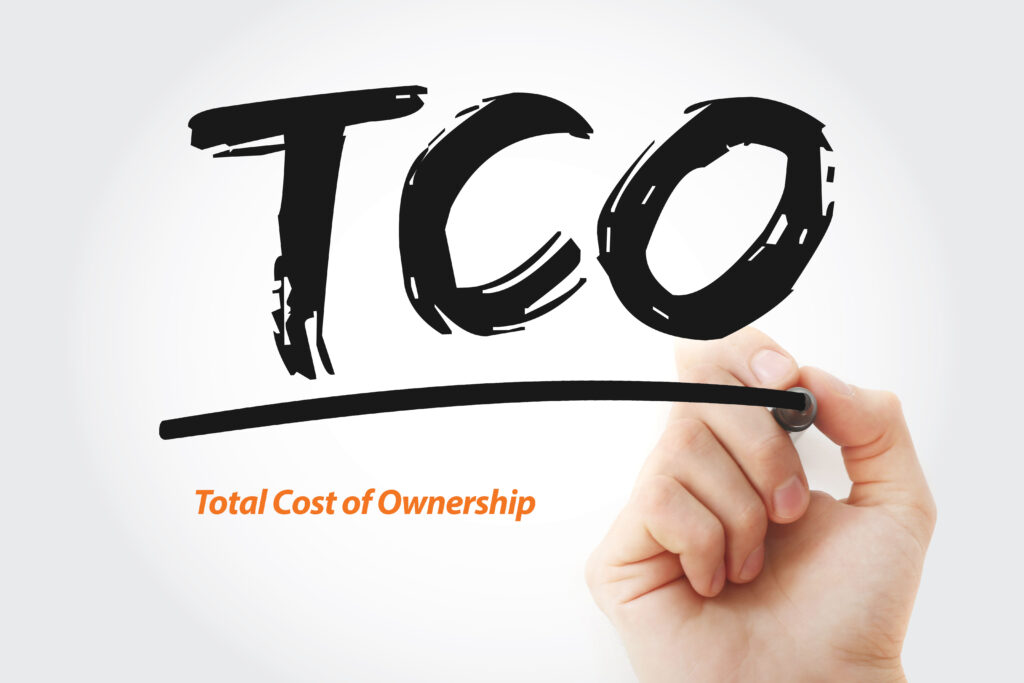
Investing in a video surveillance system will likely deliver a positive return on investment (ROI) regardless of where and why it is deployed. However, to know the actual Total Cost of Ownership (TCO), it’s essential to factor in recurring charges, as well as one-off costs.
This means that in addition to the initial cost of the cameras, recorders, video management software (VMS), cabling, network devices and installation charges, the cost of providing power, and maintaining and servicing the video surveillance system, also need to be taken into consideration.
Benchmark talks to Uri Guterman (pictured), Head of Product & Marketing for Hanwha Techwin Europe, who gives us tips on the best ways to minimise the TCO who says the cost of future upgrades should also not be ignored if the security system requirements are likely to change. Otherwise, what might at first glance appear to be the cheapest products, may subsequently prove to be otherwise and ‘buyer’s remorse, albeit as a delayed reaction, could occur.
So here are some suggestions from Uri as to what to take into consideration when deciding on which video surveillance products will, in addition to meeting your immediate requirements, deliver long term value and will not surprise you in the future with unexpected costs which have not been budgeted for.
- Are the cameras which you are evaluating ‘open platform’ and do their chipset have sufficient processing power to run edge-based third-party video analytics which you might wish to immediately take advantage of now or in the future?
- Do the cameras and recording devices support H.265, as well as other compression formats? Multi-pixel images can all too quickly fill up the capacity of an NVR or server when recorded at high frame rates and resolutions. This could become costly in terms of bandwidth and storage costs when there is a need to record and store evidence grade images. With this in mind, the preference should be to source cameras from manufacturers who have developed their own compression technology designed to complement H.265 and help further improve bandwidth efficiency.
- Do the cameras have built-in IR illumination? The cost of installing supplementary lighting can be prohibitive and so if you wish to capture high-quality images 24/7, it will be important to know a manufacturer’s cameras are effective, regardless of the lighting conditions.
- Is a product upgradeable and future proof in that it has been designed to be backwards and forwards compatible with third-party products with which it might be integrated?
- Do the cameras you are proposing to buy have firmware that can be updated as and when new features become available or when there is a need to introduce enhanced cyber security functionality as new threats emerge? The ability to do so will alone justify paying a little bit more for cameras compared to those which do not do so, as the cost of a security breach could be huge. Check, however, that the manufacturer has a policy of offering any upgrades free of charge.
- Does the manufacturer offer cameras with built-in video analytics? If so, is it license-free or how much will you have to pay for it?
- Video surveillance cameras equipped with video analytics are increasingly being deployed to help detect intruders. Not all types of video analytics can distinguish between a stray animal and a human intruder or a vehicle and what may just be video noise. In addition to frustrating control room operators, the cost of dealing with false alarms can be prohibitive. We recommend that you should make any new video surveillance system future proof by way of using cameras that support edge-based deep learning AI analytics.
- If you are no intending to use 3rd-party VMS, ask the camera manufacturer for a demonstration of their own brand video management software and/or user interface. An intuitive and therefore easy to use interface will minimise training costs.
- Is the manufacturer able to give an estimation of the life cycle of the specified products and can they provide proof as to their reliability? This will be particularly significant where there are moving parts such as in PTZ cameras. To back up any claims on reliability, does the manufacturer offer a no-quibble advanced replacement service for products under warranty and does their warranty extend over at least 3 years? Some manufacturers, such as Hanwha Techwin, offer a 5-year warranty via the installers and system integrators who are part of the partnership programme.
- What are the estimated energy costs of the individual components of the system? You might be unpleasantly surprised to learn how much some devices cost to run and we suggest that you, therefore, specify IP network cameras that feature low power consumption Power of Ethernet (PoE). This also helps reduce installation costs, as it removes the need to install power points for each camera and reduces the amount of cabling required.
- Without a doubt, the most important factor is the ability of a product to withstand a cyber-attack. Whether occurring for criminal or malicious purposes or just seen as a challenge by opportunistic hackers, cyber-attacks are a major threat to the ability of end-users to keep their confidential information safe and can be expensive to resolve.
It is strongly recommended therefore that video surveillance products should only be bought from manufacturers who support the objectives of the Secure by Default standard which was introduced in 2019 by the UK’s Surveillance Camera Commissioner.
Do you have some questions about how to minimise the total cost of ownership of a video surveillance system? Email Uri Guterman at [email protected]


